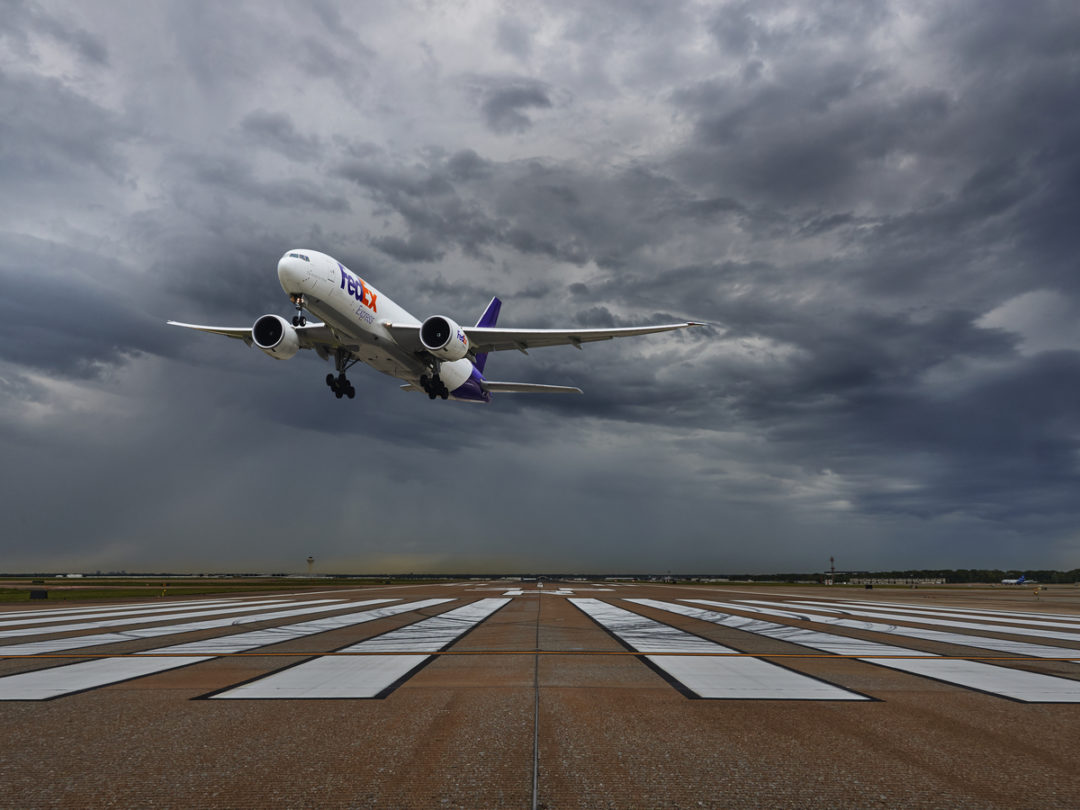Parcel express: What will the “new normal” look like?
From skyrocketing demand for same-day delivery to enhanced safety protocols, Covid-19 has seriously upended parcel carriers’ operations. Now, carriers and their customers are trying to figure out how much of the change will stick.

Covid-19 has shocked the parcel express world. As the pandemic slowly subsides and businesses begin to reopen, albeit in phases with some restrictions, parcel carriers and their customers are all trying to figure out the path forward.
What will the “new normal” look like? How has the pandemic changed parcel network operations—and the mix of business that flows through them? How quickly will consumers reopen their wallets? How many of the thousands of small businesses served will reopen—and what of those that do not?
It is a complex question for which parcel carriers, shippers, and analysts all are searching for answers. Several things are certain. Parcel carriers are an essential business. They have made herculean efforts to adapt and respond to the pandemic. They continue to make critical deliveries of essential goods in an economy that has undergone unprecedented disruption. And no one has a crystal ball shedding any reliable light on what the future has in store.
For virtually all parcel express operators, resilience in the face of seemingly overwhelming challenge, a priority on keeping employees and customers safe, and a focus on the block and tackle of the business have been the emphasis.
 “The needs of our customers change and change quickly, and if you’re going to be a player in that, you have to be able to change with them,” says UPS' David Abney.
“The needs of our customers change and change quickly, and if you’re going to be a player in that, you have to be able to change with them,” says UPS' David Abney.“We’re still delivering. We still have planes in the air, and we still have trucks on the road,” says Ryan Kelly, vice president of global e-commerce marketing for Memphis, Tennessee-based FedEx. “Safety is our top priority” for the company’s 475,000 employees, he notes. “The work they do is an essential service that helps ensure communities and businesses, including health-care organizations, as well as consumers have the critical goods they need.”
David Abney, chief executive officer of Atlanta-based UPS, emphasized a similar focus in the company’s first-quarter earnings call. “First is you’ve got to take care of your people and make sure not only that you’re doing the right things, but also that you’re communicating and making sure people realize [we’re] … a critical infrastructure business,” he said. “One thing that we have learned … is that the needs of our customers change and change quickly, and if you’re going to be a player in that, you have to be able to change with them. So, we’ve had to be very dynamic in our approach and listen.” [Editor’s note: On June 1, Abney retired as UPS CEO after a 46-year career with the company that started as a package handler in Mississippi. He’s succeeded by former Home Depot CFO Carol Tomé, who has been a UPS board member since 2003.]
PIVOTING ON A DIME
 “Building strong relationships in the good times pays off in the bad times,” notes John Janson of apparel distributor SanMar.
“Building strong relationships in the good times pays off in the bad times,” notes John Janson of apparel distributor SanMar.Shippers as well are facing challenges they’ve never dealt with before. John Janson is director of global logistics for Issaquah, Washington-based SanMar, one of the nation’s largest manufacturers and distributors of customized apparel and accessories. Multiple clients have canceled gatherings and events, impacting sales of SanMar’s traditional hats, T-shirts, and other custom-logoed apparel. In response, the company has pivoted “from making T-shirts and launched into production of masks, gowns, and scrubs,” Janson notes.
For Janson, the pandemic’s disruption has required adjustments. With social distancing came the question of “how do we work so there’s the least amount of physical interaction [with drivers], get their paperwork signed, and [get them] in and out of our facilities as fast as possible,” he notes.
He continues to see his carriers as a vital extension of the customer experience. “Customers develop a personal relationship with their driver who comes into their business every day. It’s a key factor in [which parcel carrier] they use. It will be interesting to see how this relationship evolves in the ‘new normal.’ Will it become more sterile? I hope not, but I think there will be some adjustment.”
One key lesson that the pandemic has reinforced for Janson is the enduring value of a shipper’s relationship with the carrier. “It’s more important than ever. Building strong relationships in the good times pays off in the bad times,” he notes.
As volumes have plummeted, the dropoff has challenged SanMar’s ability to live up to its contractual volume commitments with carriers. As a result, “we are working with our core providers and saying, ‘Let’s hit the pause button’ and see what comes out the other end,” Janson says. “You don’t get that [support] unless you have invested the time and energy to build those relationships in the first place.”
EMBRACING THE CROWD (SOURCE)
The pandemic also has shined a bright light on new and emerging players in the parcel express market, notably those that are deploying “crowdsourced” networks of drivers with sophisticated, mobile-based technologies.
One of those is Atlanta-based Roadie. Considered the nation’s first “on-the-way” delivery service, Roadie’s model utilizes unused capacity in passenger vehicles already on the road and headed in the right direction to make regional and last-mile same-day deliveries. Roadie says it has 150,000 “verified” drivers in the U.S. capable of reaching 89% of U.S. households.
“People used to see [same-day] delivery as a convenience or luxury, but now it’s [become] a requirement if you care about your family’s health,” notes Marc Gorlin, Roadie’s founder and chief executive officer. March, April, and May saw Roadie’s volumes explode “off the charts, across the platform. And it happened overnight,” he says.
Gorlin and others are convinced that the pandemic dramatically accelerated consumer use—and comfort with—e-commerce and online ordering of just about everything. It’s a shift in buying behavior for which Amazon has been laying the groundwork for several years. He adds that the crisis has highlighted the foresight of retailers who incorporated same-day delivery into their online options early on.
“The retailers we are working with have opened up additional delivery capacity at warp speed,” he says. At the same time, those who already had e-commerce sites are adding more products to their online menus and enabling delivery to more locations. He cites as an example farm supply retailer Tractor Supply Co., which last month began offering same-day delivery using Roadie from its entire network of 1,863 stores. The Home Depot is another major retailer that for more than a year has offered its customers same-day delivery via Roadie.
Gorlin notes that same-day home delivery is not entirely new; it’s just been reimagined through the lens of e-commerce and mobile smartphone technology. “In the old times, we used to get visits from the milk man, the egg man, and the bread man, who all delivered to our front porch,” he recalls. “So, in some ways, interest in [home delivery of consumer staples] is like a return to the past.”
ADJUSTING FOR THE RE-MIX
Covid-19 has driven significant increases in e-commerce–generated traffic for both FedEx and UPS. At the same time, more expensive business-to-consumer home deliveries have skyrocketed, while business-to-business volumes declined precipitously.
UPS’s first-quarter 2020 e-commerce shipments were up 19%, noted Brian Newman, UPS’s CFO, in the company’s earnings call. Business-to-consumer deliveries by quarter’s end approached nearly 70% of U.S. deliveries, while commercial deliveries turned negative. The overall result was a 10% increase in total miles driven and a 15% increase in average daily stops.
UPS Chief Sales and Solutions Officer Kate Gutmann added that during the pandemic, “fulfillment has really taken off … especially with small and medium-sized businesses that didn’t have fulfillment options and did need to pivot; we’ve seen a really big uptick there.” UPS also noted in its earnings call that it was reducing capital expenditures for 2020 by $1 billion.
 FedEx’s Ryan Kelly says businesses that experimented with curbside pickup and “buy online/pick up in store” during the pandemic should consider offering those services permanently.
FedEx’s Ryan Kelly says businesses that experimented with curbside pickup and “buy online/pick up in store” during the pandemic should consider offering those services permanently.FedEx as well has seen a significant increase in e-commerce shipments and expects the trend to continue. FedEx’s Kelly says he believes the industry is experiencing what likely will be an irreversible shift in consumer behavior favoring online ordering, citing a survey by research firm First Insight.
That survey “showed that only about half of consumers felt safe or very safe shopping in grocery stores, drug stores, and big-box retailers, and much less safe with other store formats,” Kelly said. “Fearful shoppers equal more online shopping. But there is no one single-channel shopper. And it takes at least 60 days of good experiences to permanently change habits. Time will tell how much consumer behavior changes,” he notes.
Going forward, Kelly recommends that businesses that experimented with curbside pickup and “buy online/pick up in store” (BOPIS) service during the pandemic consider making those permanent additions to their customer-service mix. Contactless payment methods will become more important as well. And if a business only self-fulfills, it should consider complementing its supply chain with a third-party provider in key geographic areas to build backup capacity and resiliency, improve transit times, and reduce costs.
IT’S ALL ABOUT THE CONSUMER
The speed and intensity with which the economy rebounds and where, and the rate at which unemployment decreases will dictate how quickly consumer spending recovers and how rapidly shoppers return to brick-and-mortar stores.
“My view is that the impact of the pandemic response [by government] is going to be many times greater and longer than with 9/11 or the 2009 recession,” observes Satish Jindel, principal of research and analytics firm SJ Consulting and Associates, based in Pittsburgh. “What’s different this time is that [Covid-19] has instilled a sense of fear in the hearts and minds of the general public. If you are careless, you can die from this,” he says.
Transportation firms can expect an uneven recovery, Jindel believes, the result of a ripple effect as industries, whether manufacturing, electronics, retail, consumer, electronics, wholesale, agricultural, or other industrial segments, all recover at different paces.
Some businesses will change forever, and some will never come back. “This is a long, enduring trend that will take a while to play out,” Jindel says. For instance, work-at-home employee arrangements may find more traction as businesses have learned how to manage and operate remotely. However, he warns that home-based workers should not get too comfortable. Employees working from home “should be reminded that if their work can be done from home in your town, then it can be done by someone at home in another, lower-cost part of the country or for that matter in Romania, the Philippines, or India at an even lower cost,” he notes. “That will change the mindset of people pushing to work from home. There are benefits to a company from employees coming together at the office.”
A TECHNOLOGY WAKEUP CALL
 TMSs that easily interface with warehousing and e-commerce systems are in high demand, says Bart De Muynck of Gartner Inc.
TMSs that easily interface with warehousing and e-commerce systems are in high demand, says Bart De Muynck of Gartner Inc.Technology necessarily will play a critical role as well, helping all freight transportation firms adapt and adjust to whatever the “new normal” ends up being. For some, the current situation has been a technology “wakeup call,” says Bart De Muynck, research vice president, transportation technology for research firm Gartner Inc.
Transportation management systems that can easily interface with warehousing and e-commerce ordering and fulfillment systems—and particularly, help with digitization of freight-tendering practices—are in high demand. “I have never heard so many companies come to us and ask about electronic bills of lading,” shares De Muynck.
Volatility in demand, delivery patterns, freight mix, capacity, pricing, and service levels as well as the impact of social distancing all are stressing the effectiveness of the technologies currently deployed by both shippers and parcel carriers. And it’s uncovering gaps that need to be filled, De Muynck observes.
“Now, truckers don’t want to come out of their trucks or touch paper, so that is creating a new need for a different process, one where technology plays an even larger role,” he notes. These trends and behaviors “won’t completely reverse when we come out of the pandemic. And that means we will have to have better, easier-to-use technology” that is mobile-based, intuitive, and easier to install and implement.
The message for shippers and carriers: Prepare for more investment in newer technology to keep up. “It will be an interesting time for parcel carriers, domestic retailers, and transportation technology firms,” De Muynck says, citing three keys to success: 1) effectively handling increasing volumes, 2) providing the best end-to-end customer experience, and 3) lowering costs to stay competitive.
“E-commerce volumes will only continue to grow in the double digits. But there needs to be more collaboration in the future between [retailers, carriers, and technology] market players,” he advises. “With this growth, there is enough pie to go around for everyone.”
Related Articles

Copyright ©2024. All Rights ReservedDesign, CMS, Hosting & Web Development :: ePublishing